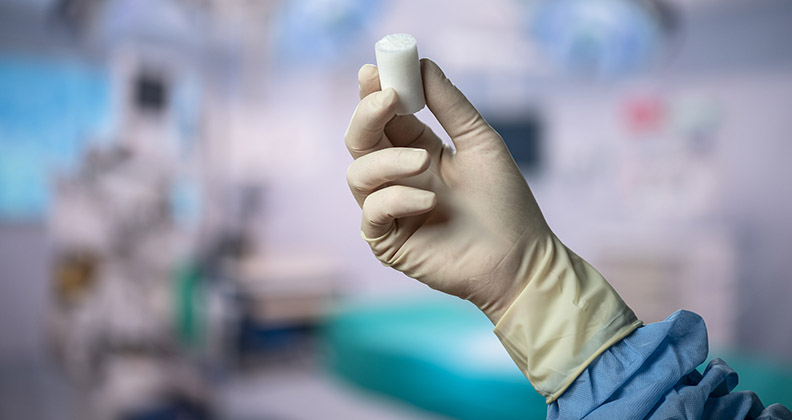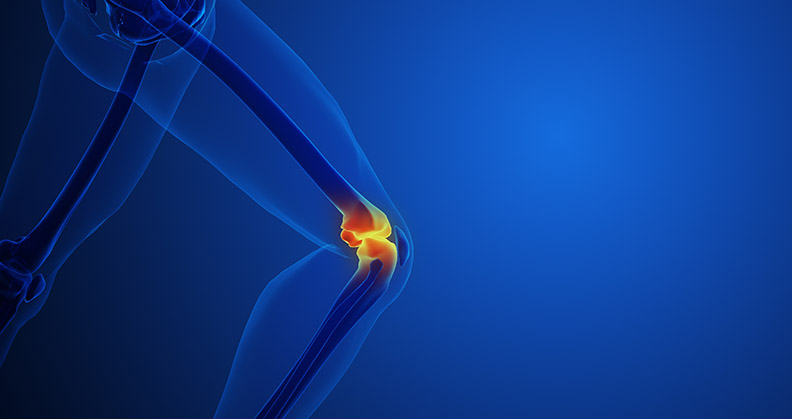
Surgeries lost or deferred during the pandemic returned to the funnel and elevated orthopedic procedure volumes beyond historical norms in 2023. The tailwind is expected to last through most of 2024.
Lingering market disruption hampered the early portion of 2022, but the second half of that year showed signs of a rebound that would define the market’s 2023 performance. The orthopedic market finished 2023 with $59 billion in sales and 6.3% growth, and is expected to surpass $70 billion by 2027, according to ORTHOWORLD reporting.
Let’s look at each orthopedic segment’s significant trends and developments. The numbers and insights are based on THE ORTHOPAEDIC INDUSTRY ANNUAL REPORT® from ORTHOWORLD.
Joint replacement. While all product segments overperformed in 2023, joint replacement saw the most significant recovery after losing years of growth due to the pandemic.
Procedure volumes rebounded sharply after almost three years of lagging recovery compared to other orthopedic segments. The knee and hip replacement categories finished well above their historical averages, growing +9% and +5%, respectively. The gravitational pull of knee and hip procedures wasn’t great for everyone, however. At times, distributor focus and operating room availability grew scarce for companies focused on smaller joints.
The synergy between knee replacement robotics and cementless implants is a crucial battleground for the segment’s most prominent players. Zimmer Biomet said it gets a price uplift of up to 15% on cementless knee implants performed in the ASC setting.
Spine. The role of enabling technology is expanding across orthopedics, but it is a near must-have to compete effectively at the top echelon of the spine market. Stryker said gaps in its spine enabling technology offering kept that business from growing above market rate.
Enabling technology and scale are driving the segment’s M&A activity. Globus Medical became the clear number two player after its merger with NuVasive. Orthofix finds itself in a unique position with an enhanced and diversified portfolio after its merger with SeaSpine.
The best growth performances still come from pure-play companies in the mid-tier. ATEC positioned itself as an alternative to a market comprising disrupted or apathetic players and leveraged that into a multi-year run of incredible growth.
Trauma. Trauma also bounced back after a softer 2022 and the impact of volume-based procurement (VBP) in China. Despite increased attention on foot and ankle from the market’s largest players, smaller pure-play companies remain confident that their focus provides a competitive advantage over reps with large bags of products.
Stryker’s focus on core trauma improved after the acquisition of Wright Medical and now features an experienced leadership team with dedicated R&D resources. Smith+Nephew’s 12-point turnaround plan helped fuel a strong year for the company’s trauma and extremities business, which it called an important growth driver for its orthopedic sales.
Sports medicine. VBP in China is coming to the sports medicine segment in 2024. The policy is already in effect for large joints, spine and trauma, so companies have adapted to the tender process and new market dynamics.
Smith+Nephew said that regenerative treatments are in the very early stages of market adoption but provide tremendous growth opportunities; REGENETEN was the largest contributor to the company’s sports medicine growth in 2023. Stryker’s sports medicine business started with little fanfare 12 years ago but became a “rocket ship of growth” over the last several years and provided critical inroads into the ASC environment.
Orthobiologics. This segment faced reimbursement changes in viscosupplements and availability constraints on allografts stemming from supply disruption.
Reimbursement changes for hyaluronic acid treatments offset growth for some companies in early 2023, but Anika Therapeutics, Bioventus and Seikagaku all finished the year strong. An industry-wide reagent supply disruption impacted allograft availability in the second half of 2023. In recent quarters, Bioventus and Orthofix faced tumultuous patches that put their distribution network at risk. Distributor churn hampered Bioventus’ bone graft substitute sales, but Orthofix expanded its U.S. sales network in the fourth quarter.
Enabling technology. Surgical robots continue to help the largest orthopedic players defend lucrative implant market share through closed-system technologies that lock customers into a single vendor.
Zimmer Biomet will be the first to market with a robot for shoulder arthroplasty after playing catch-up to Stryker in knee replacement. Its peers will undoubtedly follow in time, but currently have other priorities.
Companies like Enovis and Augmedics are betting on easy-to-use, cost-effective navigation systems utilizing augmented reality. While robotics gets a lot of attention, versatile navigation systems will likely play the primary role in driving market adoption of technology.
Company Performances
ORTHOWORLD estimates show that fewer than 50 companies generate more than $100 million in orthopedic revenue and account for approximately 85% of all orthopedic sales. Consolidation remains a significant force in the market, and orthopedic M&A transactions accelerated in 2023 for the first time since the pandemic.
The seven companies with over $1 billion in annual orthopedic revenue make up two-thirds of the global market and totaled $39 billion in orthopedic sales during 2023. Exhibit 3 shows their 2022 and 2023 sales performance.
Here are some of the developments we’re watching among these companies:
Joint Replacement Uptick. How far into 2024 will joint replacement procedure volume tailwinds persist? Industry leaders agree that it will continue through most of the year before returning to more baseline numbers. However, players like Stryker and Zimmer Biomet see promising demographic trends in the segment that could drive a long-term higher growth rate.
Technology-driven M&A. Orthopedic M&A is expected to remain active in 2024 as technology becomes increasingly important, especially in the spine market. Spine is the most active segment at 28% of all orthopedic M&A transactions since 2016, while digital-focused transactions accelerated since the pandemic. Despite relatively low market adoption, these technologies exert a powerful influence on implant market share.
VBP in China. Many multinational companies in the top tier have weathered multiple price cuts on orthopedic products in China. Sports medicine will join joint replacement, trauma and spine as nationally tendered segments in 2024. While the changes drove some global players out of China, the persistence of others underscores the vital importance of the Chinese market.
Top-tier players weren’t the only companies that garnered significant attention. Enovis is consistently among the best performers in orthopedics and once again outgrew the market by a fair margin. The company’s aggressive acquisitive strategy in high-growth markets, proven integration capabilities and efficient approach to enabling technology make it a formidable contender.
With its ninth acquisition since 2020, Enovis acquired LimaCorporate for $850 million in early 2024. Lima brings a diversified portfolio that has grown at a high single-digit CAGR over the last 10 years, increasing into the low teens in the previous several years. Enovis expects LimaCorporate to generate between $290 million and $300 million in 2024.
In recent years, disruption in the spine market has provided ATEC with the perfect opportunity to position itself as an alternative to larger and potentially distracted companies. ATEC holds approximately 5% market share in spine and said the remaining market was 35% disrupted and 60% apathetic. It is hard to argue with ATEC’s success. The company’s five-year CAGR since its 2018 turnaround is nearly 40%.
Exactech voluntarily initiated recalls on its knee, hip and ankle replacement products between 2021 and 2023 due to defective packaging, which led to oxidation and increased risk of product failure. In early 2024, FDA alerted patients and healthcare providers about risks associated with the company’s shoulder replacement implants, leading Exactech to recall its shoulder implants.
Treace Medical isn’t surprised that orthopedics’ largest players want to tap into the $5 billion bunion treatment market. “We’re way ahead,” said company founder and CEO John Treace in reference to his company’s IP, surgeon retention rates and focused sales force.
The rollout and remarkable success of KeriMedical products in the EMEA region helped Medartis pass the $100 million milestone there for the first time. Lower extremity sales surged 41% in EMEA and represent an area of strategic importance and focus for the company.
While the market’s top players pay less attention to pediatric orthopedics, one company is quickly amassing share.
OrthoPediatrics has quietly developed into one of the more acquisitive companies in the industry, and has positioned itself to control up to 50% of the pediatric trauma and deformity market in the next few years.
Market Forecast
We expect some remaining volume upside in the coming quarters before growth rates normalize. However, demographic trends and the expansion of technology could modestly accelerate market growth in the mid-term.
We project the market to grow 5% and reach $62 billion in sales in 2024 and eventually surpass $70 billion in sales by 2027. We based our orthopedic market forecast on many factors, including the key trends reviewed below.
Stable Procedure Volumes and Seasonality. The catch-up period for deferred and canceled surgeries likely peaked in mid-2023, but most orthopedic players expect a modest tailwind through 2024. The seasonal rhythms of the industry also normalized during 2023. While the pandemic certainly changed orthopedics, the last two years have injected some needed certainty and predictability back into the market.
GLP-1 Drugs Unlikely to Impact the Industry. The efficacy of GLP-1 weight loss drugs brought further uncertainty to orthopedic investors in the second half of 2023. However, initial concerns over the impact on joint replacement and other orthopedic procedures were likely overblown. The consensus among those executives is that the drugs won’t negatively impact orthopedic procedure volumes and could, in fact, be a modest tailwind in the longer term if lower BMIs create more surgical candidates.
Changing Patient Behavior. In mid-2023, Zimmer Biomet noted the early signs of a changing paradigm among patients eligible for orthopedic procedures. The company believes technologies like robotics, increased access to orthopedic ASCs and more flexibility due to remote work make patients more likely to undergo procedures. Improved patient confidence could further elevate the largest orthopedic segments.
Several recent and consequential M&A deals highlight the need to delve into some market consolidation and funding trends.
M&A Punches Above Its Weight Class. We tracked 29 orthopedic M&A announcements and 24 closed transactions in 2023, marking the first yearly increase since 2020. Orthopedic valuations and multiples compare favorably to overall medtech. Targets are now split primarily into two camps: commercial stage or highly differentiated companies with a clear path to market adoption. A survey of recent deals shows a bias toward commercialized targets. Enovis’ deals for LimaCorporate, Novastep and Mathys fit the profile.
New Class of Buyer Emerges. While Stryker and its globalized peers will continue ranking at the top of M&A activity, players like Enovis and OrthoPediatrics have begun to make some noise. Since 2020, those companies have been in the top five for most orthopedic acquisitions.
Funding Pace Slows, Check Sizes Grow. Unprecedented market conditions of 2021 drove the acceleration of orthopedic funding as investors sought to deploy a war chest of capital in the immediate aftermath of the pandemic. However, the number of investments declined in the last two years. The 29 investments announced during 2023 represented a 40% drop-off from the 2021 activity peak. However, the average investment increased by more than $11 million (+72%) since 2020 as investors prioritized later-stage companies and big-ticket items that can pave a path to profitability.
The expansiveness of the orthopedic industry means there is no shortage of trends to analyze and discuss moving forward. It will be interesting to monitor how the market develops and grows as orthopedic companies across all segments continue to explore what’s possible and push patient care forward.
ME
Mike Evers is a Senior Market Analyst and writer with over 15 years of experience in the medical industry, spanning cardiac rhythm management, ER coding and billing, and orthopedics. He joined ORTHOWORLD in 2018, where he provides market analysis and editorial coverage.




